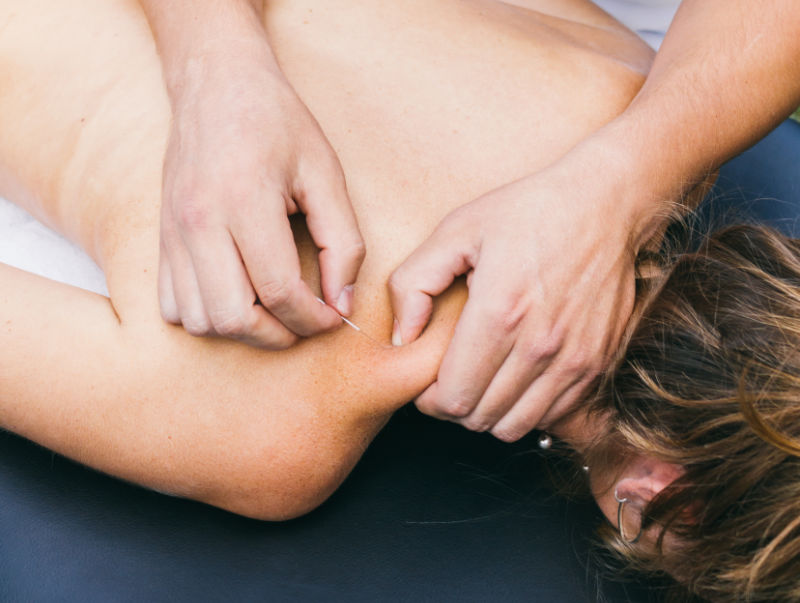Is an old injury keeping you side-lined? Trigger point dry needling can be an effective treatment option.
In our pursuit of fitness and participation in sports/recreation, most of us have sustained an acute injury of ligament/joint sprain or a muscular strain. If not this, then perhaps an overuse type of injury from repetitively performing our preferred activity. With proper assessment and treatment, most injuries will recover in a few weeks to 3 months. Initial treatment generally includes rest, elevation, compression or bracing, use of ice/heat and possibly anti-inflammatories. As healing progresses range of motion exercises, soft tissue and joint mobilization techniques, possibly cortisone injections and specific strengthening and education in a home exercise program and or altering faulty movement patterns and posture are added.
However, sometimes pain will persist beyond a “normal” expected time frame of healing. If an injury has been assessed by a physician and other possible pain contributors/causes have been ruled out (i.e. joint injury), an individual may have lingering pain from muscular trigger points that have developed. This can occur when a muscle does not return to its normal resting length following an acute protective muscle spasm or shortening that occurs with new injury. Additionally, it can happen in the case of over fatigue of a muscle group with repetitive use or faulty movement patterns. If a muscle is not able to contract–relax normally and stays contracted, it will lead to excessive pulling on tendons that attach the muscle to bone. This can lead to inflammation of the tendon referred to as tendinitis and chronically as tendinosis.
Myofascial trigger points (MTP’s) been well documented by physicians J. Travell and D.C.Simmons. MTP’s are described as localized areas of tender and shortened muscle (taut bands) that often can be localized by palpation. When palpated these points produce local and or referred pain (pain that is felt remotely from the source with an identified pattern). Travell and Simmons have demonstrated effective treatment of MTP’s with manual pressure, stretching and injections. The introduction of the needle itself and its mechanical effects, have been theorized to be as effective as the injection alone.
The use of dry needling for myofascial pain and MTP’s has been effectively utilized by physicians and trained therapist for years. Intramuscular stimulation (IMS) is a type of trigger point dry needling that has been developed by Dr. Chan Gunn, clinical professor at the University of Washington and the University of British Columbia in the 1970’s. IMS is the use of a fine gauge monofilament needle attached to a plunger device. The needle is inserted into the MTP in order to cause stimulation which is initially felt as a cramping sensation which resolves after a few seconds. The needle causes the muscle to briefly contract and then relax in the area that the needle is penetrating. This is called a local twitch response. With repeated stimulation the ability to cause the taut muscle band to relax and eventually return to a “normal” resting position can be achieved. Documentation of muscle relaxation has been demonstrated to be magnetic resonance elastography (Archives of Physical Medicine and Rehabilitation 2007) and increased blood flow has been documented using thermography (J. Korean Pain SOC. 2002).
The number of treatments the patient requires is dependent on the severity of the condition and how quickly a person heals. It is usually performed 1 time a week for 3–12 treatments and should include a specific stretching, self soft tissue mobilization and strengthening exercise program in order to address muscle imbalances. Additionally, patient education is required specific to modifying faulty movement patterns or posturing.
IMS is performed by trained physicians and physical therapists to specifically address myofascial pain and MTPs and is just part of comprehensive treatment plan that can allow rehabilitation to progress and or continue. I personally have experienced the benefit of IMS in helping me overcome a hip injury. I am also seeing good results first hand in the patients that I am treating in helping them to return to sport and recreation.
Joy McKay, PT

